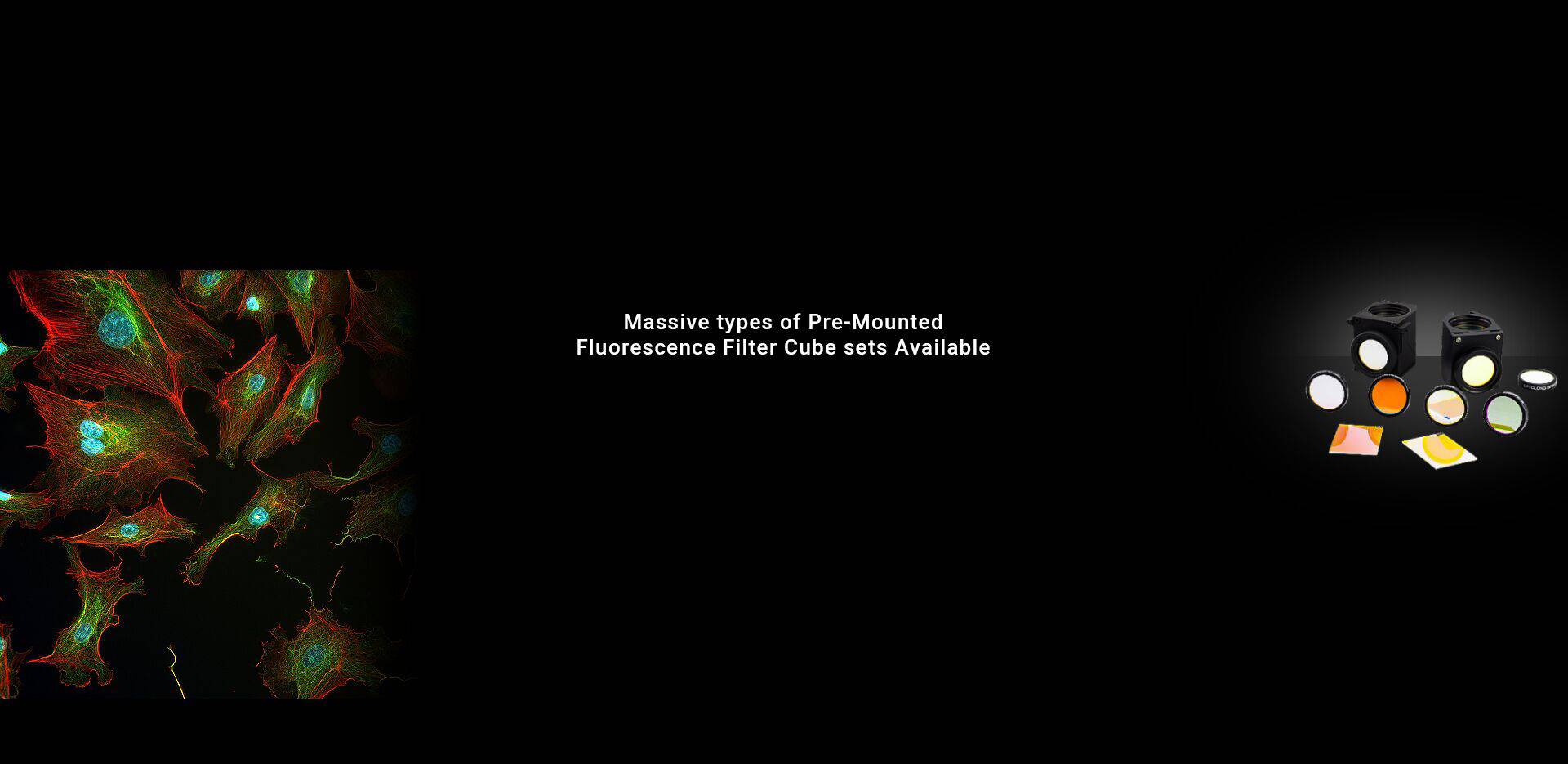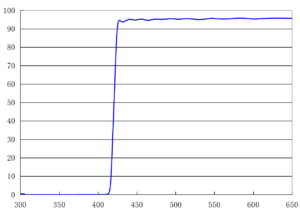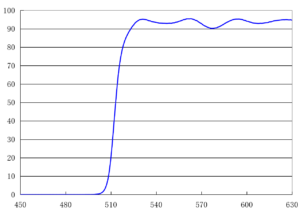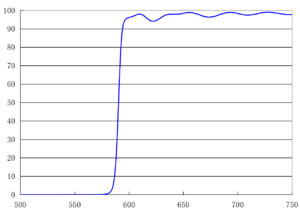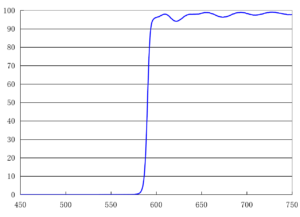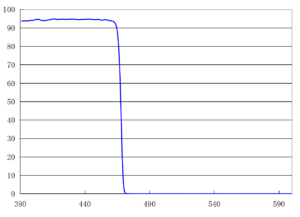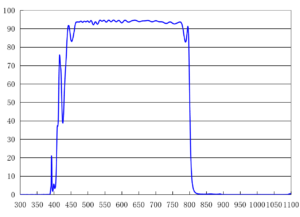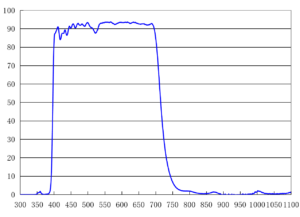-
415nm Longpass band Emission Filter
Part Number: 31001-LP415nm …
More Detail -
510nm Longpass band Emission Filter
Part Number: 31003-LP510nm …
More Detail -
590nm Longpass band Emission Filter
Part Number: 31004-LP590nm …
More Detail -
590nm Longpass band Emission Filter
Part Number: 31005-LP590nm …
More Detail -
Longpass Filter 680nm
Filter Type : Long Edge Filter
Edge Wavelength: 680nm …
More Detail -
Shortpass Filter 470nm
Filter Type : Short Edge Filter
Edge Wavelength: 470nm …
More Detail -
UV IR cut filter 650nm
Filter Type : Short Edge Filter
Edge Wavelength: 650nm …
More Detail -
UV IR Cut Filter 800nm
Filter Type : Short Edge Filter
Edge Wavelength: 800nm …
More Detail -
UV/IR Cut Filter 700nm
Filter Type : Short Edge Filter
Edge Wavelength: 700nm …
More Detail
Frequently asked questions
-
A long pass filter, also known as a high pass filter, is an optical filter that allows light of longer wavelengths to pass through while blocking light of shorter wavelengths. The wavelength at which the filter starts to pass light is called the cutoff wavelength.
Optical high pass filters are widely used in spectral analysis, microscopic imaging, fluorescence detection, and other fields. Especially in optical instruments, they can effectively remove stray light or selectively enhance light signals of specific wavelengths, thereby improving the accuracy and sensitivity of the system.
Optical high pass filters are particularly common in fluorescence microscopes and are used to isolate light emitted by specific fluorescent dyes. -
Optical Low Pass Filter (OLPF) is an optical device used to block high-frequency light and allow low-frequency light to pass through. Its main function is to reduce noise and sharpness in an image, thereby preventing over-sharpening of the image and reducing interference. In photography and optical imaging systems, optical low pass filters are often used to suppress moiré fringes and color aliasing.
The working principle of the low pass filter is to selectively attenuate the light by wavelength, allowing only light with longer wavelengths to pass through while blocking light with shorter wavelengths. -
Applications in spectroscopy
Long pass filters are widely used in precision spectroscopy, usually as band separators. They can help separate specific wavelengths of light from the spectrum, ensuring that the light signal received by the instrument is accurate and correct, thereby improving the accuracy of spectral analysis.
Cut-off filters in photometric instruments
Long pass filters are also used as cut-off filters in photometric instruments to effectively eliminate optical distortion. By blocking unwanted short-wavelength light, the sensitivity and accuracy of the instrument can be improved, making the measurement results more reliable.
Applications in fluorescence measurement
In fluorescence measurement, long pass filters are ideal tools. They can effectively eliminate the leakage of excitation light so that the detector only receives the fluorescence signal emitted by the sample. This filter can maximize the collection of sample fluorescence and reduce background noise.
Applications in Raman spectroscopy
In addition to spectroscopy and fluorescence measurement, long pass filters are also used in Raman spectroscopy. In this application, they help separate Raman scattered light for better analysis of the molecular structure of the sample.
Combined with Short Pass Filter
Longpass Filter can be combined with short pass filter to form a bandpass filter system. This can filter out the extra wavelengths of light from the same light source, allowing only wavelengths within a specific range to pass, which is suitable for more complex optical detection and analysis systems. -
Protective packaging: When not in use, store the filter in protective packaging to protect it from moisture. Many optical components are packaged in moisture-proof packaging.
Controlled storage conditions: Store the long pass optical filter in a controlled environment where the humidity is kept within an acceptable range. This may involve using air conditioning or dehumidifying the storage area.
Regular maintenance and inspection: Regularly inspect the filter for signs of moisture damage, such as fogging or condensation. Clean according to the manufacturer's instructions to ensure that no moisture is introduced during the cleaning process.
Avoid direct contact: When handling long pass filters, avoid direct contact with the filter surface with your hands. It is best to use clean pliers or gloves to prevent grease and dirt from adhering to the filter.
Professional cleaning method: If the Longpass Filter needs to be cleaned, it is usually wiped gently with a fiber-free cloth and a suitable solvent (such as isopropyl alcohol). -
Yes, Optolong's long pass optical filter and short pass filter both support customization services. We can design and develop filters that meet your requirements according to your specific needs to ensure that the performance requirements of different application scenarios are met.
Whether it is the wavelength range, cut-off wavelength, or size specifications, they can be flexibly customized to achieve the best optical effect. -
Long pass optical filter is mainly made of fused quartz, B270, and other materials. For the 680 nm high pass filter and low pass filter, the materials used include fused silica, B270, float glass, and absorption glass.
Edge Filter chooses these materials because of their optical properties, suitable for filtering specific wavelengths of light, and ensuring the durability and effectiveness of the filter. -
The main difference between long pass filter and short pass filter lies in their transmission and blocking characteristics of light of different wavelengths:
Long pass optical filter
Transmitting light with longer wavelengths: A long pass filter allows light waves longer than their cut-off wavelength to pass through while blocking light with shorter wavelengths.
Application: Commonly used to remove short-wavelength stray light, isolate signals in infrared or visible light bands, and are widely used in spectral analysis, fluorescence imaging, Raman spectroscopy, and other fields.
Short pass filter
Transmitting light with shorter wavelengths: A short pass filter allows light waves shorter than their cut-off wavelength to pass through while blocking light with longer wavelengths.
Application: Commonly used to isolate ultraviolet or short-wave visible light, used in fluorescence microscopes, optical imaging, and other equipment that requires filtering long-wavelength light signals.
A long pass filter allows long-wavelength light to pass through and blocks short-wavelength light; a short pass filter, on the contrary, allows short-wavelength light to pass through and blocks long-wavelength light. They can be used independently or in combination to achieve complex optical filtering functions.
